Bitcoin price today: falls to 2-week low below $113k ahead of Fed Jackson Hole
Introduction & Market Context
Summit Therapeutics PLC (NASDAQ:SMMT) presented its Q1 2025 earnings on May 1, highlighting the company’s continued focus on advancing its lead candidate Ivonescimab across multiple cancer indications. The biopharmaceutical company maintained a strong financial position with $361 million in cash and investments while progressing its clinical pipeline through strategic collaborations.
Summit’s stock has shown significant volatility over the past year, trading between $2.10 and $36.91, reflecting investor sensitivity to clinical developments. Following the earnings presentation, the stock experienced a 2.8% decline to $24.24 in recent trading, though it showed signs of recovery in after-hours trading with a 1.17% gain.
Quarterly Performance Highlights
Summit Therapeutics reported a GAAP net loss of $62.9 million for Q1 2025, slightly higher than the $61.2 million loss in Q4 2024. On a non-GAAP basis, which excludes stock-based compensation, the company posted a net loss of $51.8 million, or $0.07 per share, beating analyst expectations of a $0.09 per share loss.
The company’s operating expenses remained relatively stable quarter-over-quarter, with total GAAP operating expenses of $66.8 million in Q1 2025 compared to $65.6 million in Q4 2024. Research and development expenses were essentially flat at $51.2 million, while general and administrative expenses increased to $15.6 million from $14.2 million in the previous quarter.
As shown in the following financial summary comparison:
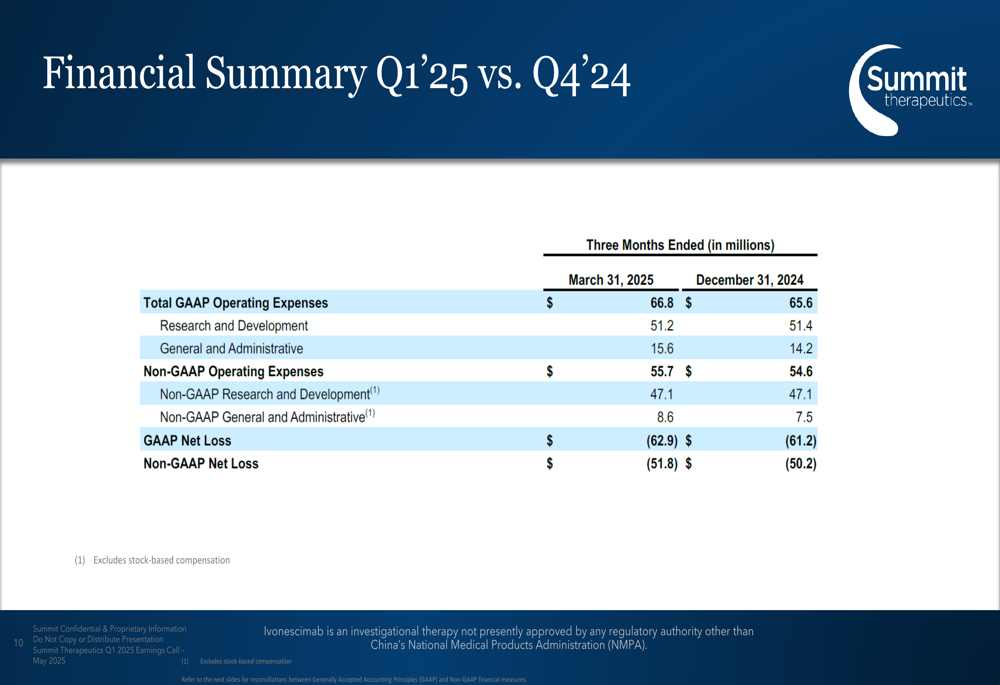
Summit maintains a debt-free balance sheet with approximately $361 million in cash and investments as of March 31, 2025, providing runway for its ongoing clinical programs. The company has approximately 742 million common shares outstanding.
Ivonescimab Pipeline Progress
Summit’s presentation highlighted significant progress with Ivonescimab, its novel bispecific antibody targeting both PD-1 and VEGF pathways. The company is advancing a comprehensive development program across multiple cancer types, with particular focus on non-small cell lung cancer (NSCLC).
The pipeline visualization below illustrates Summit’s expanding development program for Ivonescimab:
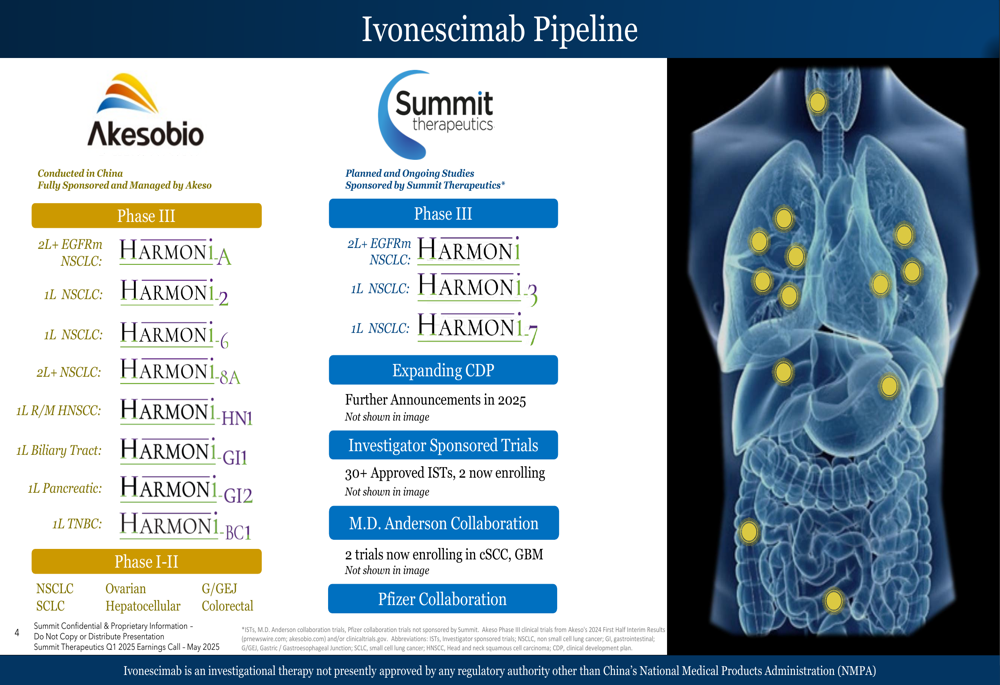
Key developments for Ivonescimab include:
1. Approval in China for first-line NSCLC with PD-L1 expression
2. Statistically significant superiority in progression-free survival versus PD-1 plus chemotherapy in first-line squamous NSCLC
3. Ongoing enrollment in HARMONI-7, comparing Ivonescimab monotherapy to pembrolizumab
4. Two studies now enrolling through MD Anderson collaboration in cutaneous squamous cell carcinoma (cSCC) and glioblastoma multiforme (GBM)
5. Investigator-sponsored trials (ISTs) beginning enrollment
6. Pfizer (NYSE:PFE) collaboration with clinical trials expected to start later in 2025
Summit expects several important catalysts in 2025, including mid-year results from its first global Phase III trial of Ivonescimab plus chemotherapy versus chemotherapy alone in second-line or later EGFR-mutated NSCLC:
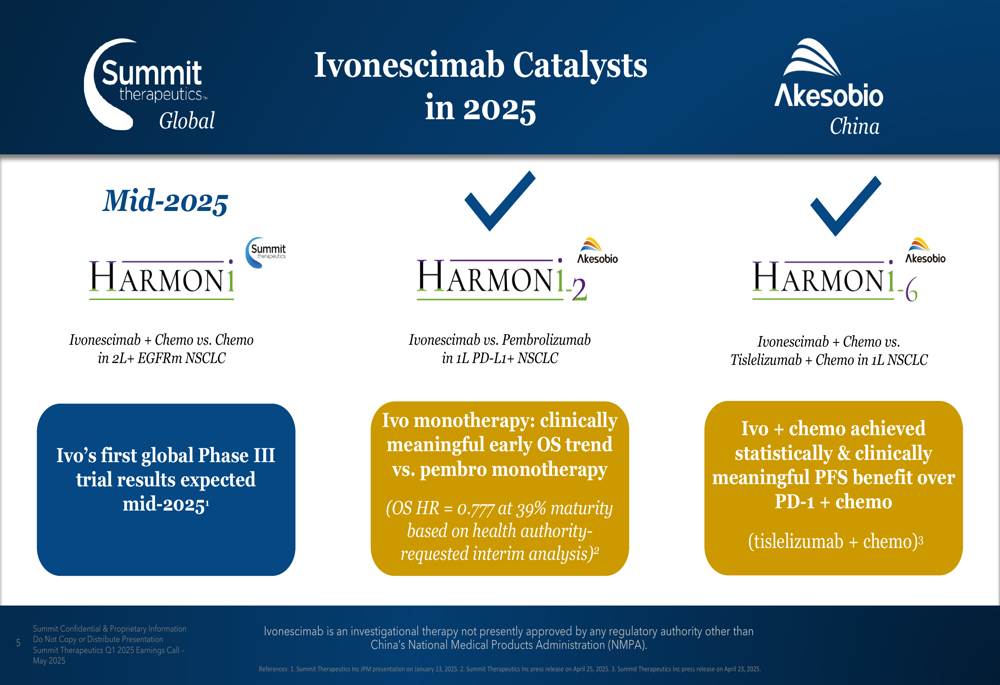
The HARMONI-3 study represents one of Summit’s key clinical trials, evaluating Ivonescimab plus chemotherapy against the standard of care pembrolizumab plus chemotherapy in first-line NSCLC:
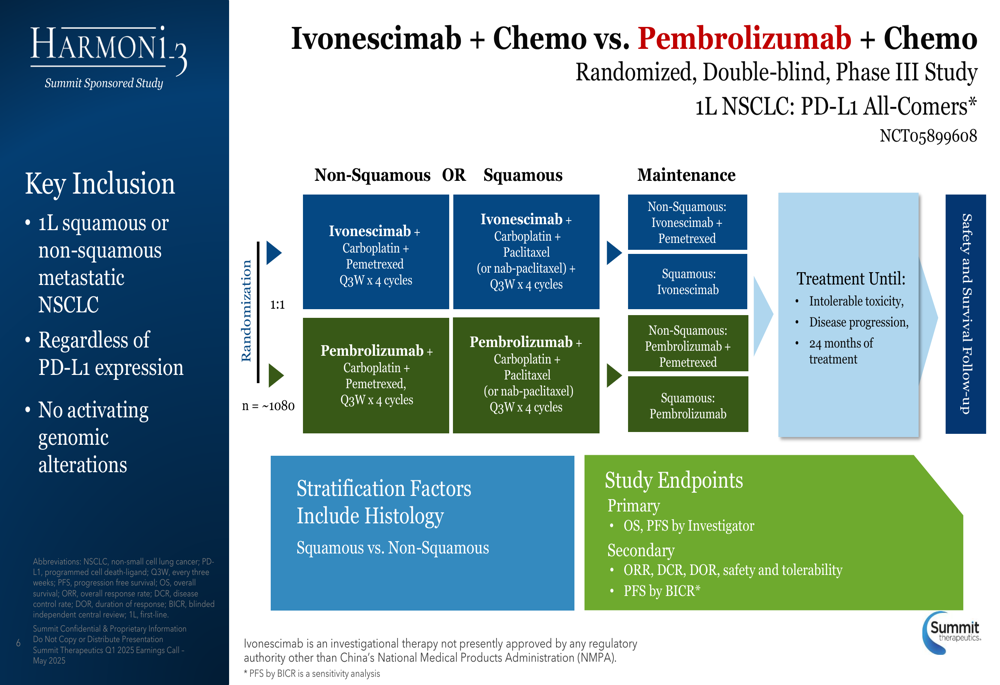
Financial Analysis
Summit’s financial strategy focuses on maintaining sufficient capital to advance its clinical programs while managing expenses. The company’s quarterly non-GAAP net loss of $51.8 million represents a slight increase from the previous quarter’s $50.2 million loss, though the per-share loss remained steady at $0.07.
The reconciliation between GAAP and non-GAAP financial measures reveals that stock-based compensation accounts for a significant portion of the company’s expenses, totaling $11.1 million in Q1 2025:
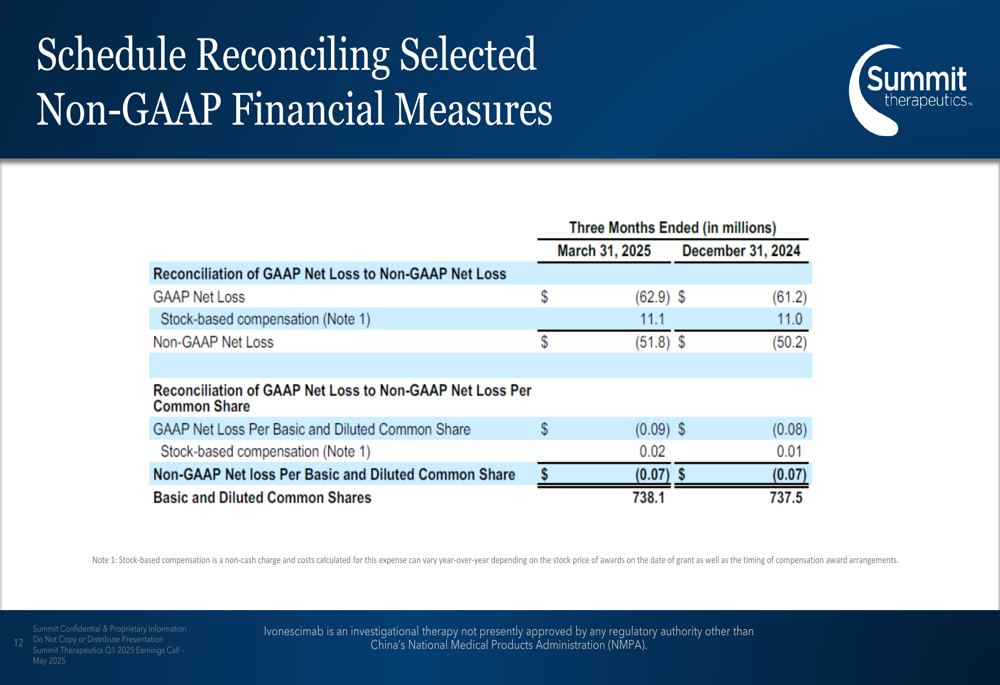
Summit’s strong cash position of $361 million and zero debt provide a solid foundation for advancing its clinical programs. Based on current spending rates of approximately $52 million per quarter in non-GAAP operating expenses, the company appears to have sufficient runway for continued operations through 2026, assuming no additional financing or significant changes in spending patterns.
Market Opportunity (SO:FTCE11B) & Strategic Position
Summit is positioning Ivonescimab to compete in a substantial market. The company estimates the 2028 checkpoint inhibitor total addressable market at over $90 billion, with NSCLC representing more than $20 billion of that opportunity. The dual mechanism of Ivonescimab, targeting both PD-1 and VEGF pathways, potentially addresses multiple cancer types where either or both pathways are clinically relevant.
The following image illustrates the market opportunity for Ivonescimab across various cancer types:
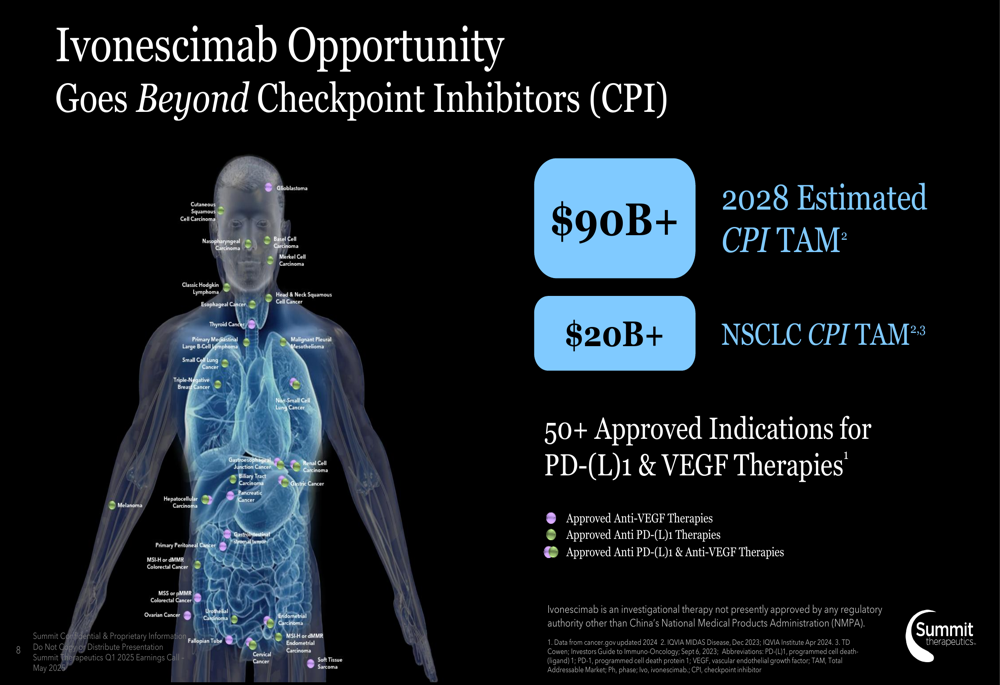
Forward-Looking Statements
Summit Therapeutics has outlined several key milestones for 2025, with the most significant being the mid-year readout of topline data from its HARMONI studies. The company is also expanding its clinical development program beyond lung cancer through collaborations with MD Anderson Cancer Center and Pfizer.
The company’s strategic focus remains on advancing Ivonescimab through clinical development and toward potential regulatory approvals outside of China. Summit’s strong cash position supports these initiatives, though the company will likely need to demonstrate positive clinical outcomes to maintain investor confidence given its ongoing operating losses.
As Summit continues to execute its clinical development strategy, investors will be closely watching for the mid-2025 data readouts that could significantly impact the company’s valuation and long-term prospects in the competitive oncology market.
Full presentation:
This article was generated with the support of AI and reviewed by an editor. For more information see our T&C.
